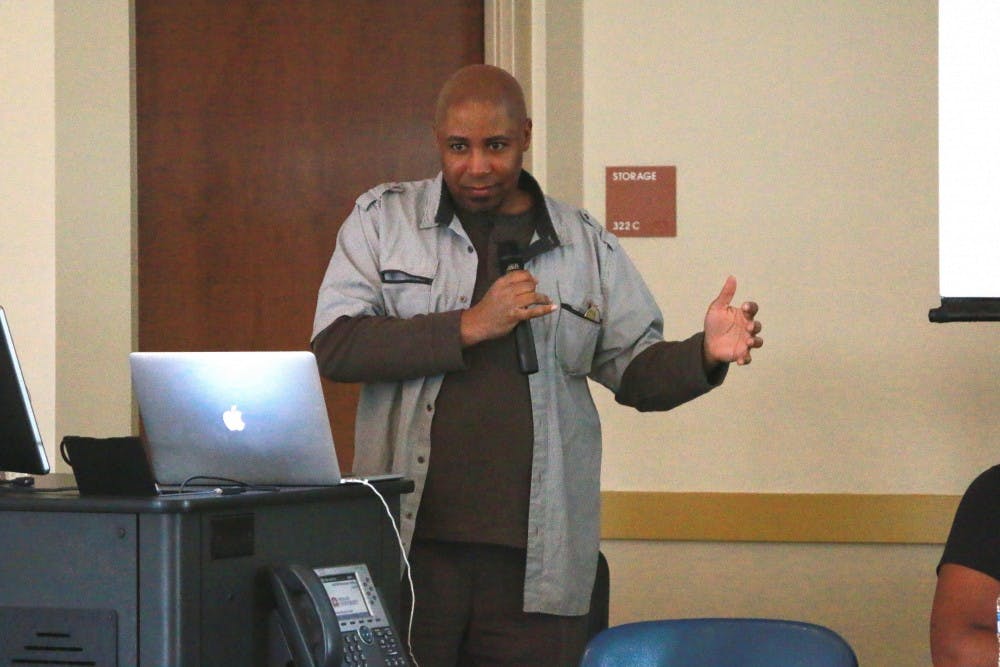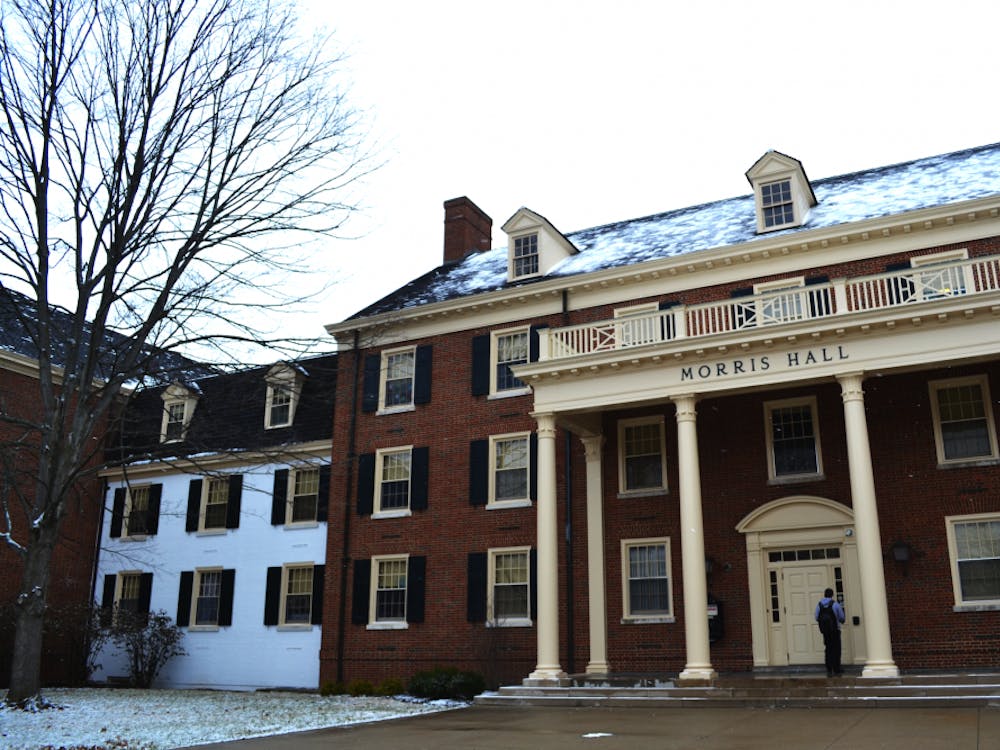About 100 Miami students and Oxford community members filled the auditorium of McGuffey 322 on Thursday evening to discuss fighting institutionalized racism in schools.
The event was moderated and mainly organized by Clara Guerra, a member of the Black Action Movement 2.0 (BAM 2.0) and the Collective, a student-led movement to tackle major issues on campus. Financial support, food and additional promotion for the event was provided by Miami's Robert E. Stripple Memorial Continuing Dialogue on Social Justice and Human Rights, which supports an event focused on social justice of some sort every year.
Guerra was joined by Miranda Woods, another member of BAM 2.0, as they began the forum with an overview of the history of racial tensions at Miami and other nearby schools.
They began by discussing an incident in 1989 when Talawanda High School students dressed up as the KKK for Halloween and ended with this year's backlash over the racist messages on GroupMe and Tinder that went viral.
In between, they recalled notable moments such as the formation of the original BAM in the late 90s, the large Miami for Mizzou rally in 2015 and the rally against white supremacy last semester. They recapped BAM 2.0's protests and progress over the past month.
"Be on the lookout for another press release with more details coming up [within the next week]," Woods said.
Mona Jenkins and Brian Taylor of Mass Action for Black Liberation (MABL) - formerly known as Black Lives Matter: Cincinnati - then presented a broader history of racism and how it came to be institutionalized.
Taylor explained how racism in American originated as a tool to justify slavery by dehumanizing black people, making it more acceptable to mistreat them.
He claimed that racism could have ended with the Civil War, but that racial terror actually worsened after slavery ended because Reconstruction threatened established wealth and power structures both in the North and the South.
The rise of the KKK and violent lynchings, Taylor said, were part of a counterrevolution meant to discourage both black and white people from attempting to change those structures. Even now, institutions are still affected by that counterrevolution.
"The point is not to make you feel guilty," Taylor said, addressing any white members of the audience. "The point is that we, together, learn this history, and educate other people and fight against it, together."
After every racial incident at Miami or elsewhere, Taylor said, the school always tries to distance itself and claim it was an isolated incident that is not reflective of the school as a whole.
Enjoy what you're reading?
Signup for our newsletter
"But it is," Taylor said. "The university is part of the problem."
Taylor outlined three main courses of action that he thought were necessary: the "rooting out" of racist teachers, administrators and students on a #MeToo level, better education about the real history of violence towards black people and mass public action when racist incidents happen to expose all involved.
Jenkins recalled that Miami's reputation for racism twenty years ago was so well known that in 1996 when she was offered a full ride to attend she turned it down. To her, it seems that not much has changed.
"When my brother got into a fight at school as a kid, my mom would look at me like, 'Are you going to stand up for your brother?'" Jenkins said. "I'm looking at you all. Are you going to stand up for your brothers and sisters up here? I know I am."
Jenkins and Taylor then sat on a panel with Guerra, Woods, Rachel Hollins of Black Women Empowered (a campus club to support the varied identities, struggles and legacies of black women) and Austin Lamewona, who is also involved with BAM 2.0.
Questions from the audience spanned topics such as dealing with racism in the classroom to the progress of BAM 2.0.
One question was about dealing with situations where someone says something they don't necessarily realize is offensive.
"It's important for people to realize that intent doesn't have a place in these discussions," Lamewona said. "What you meant doesn't really matter…the damage has been done."
Another was about mobilizing middle-ground white people who want to help but either don't know how or don't think it's their place to do so.
Taylor said it's important to create a space where those people could ask honest questions in an environment of camaraderie and become comfortable with being part of the dialogue around fighting racism. He also suggested a reframing of the conversation around privilege, which often gets people defensive.
"I don't believe in privileges," Taylor said. "I believe in rights… You can fight for rights, collectively. It's hard to fight for privilege."
Panelists discussed BAM 2.0's progress with Miami's administration and Woods announced the group's intention to keep pressure on the administration up - along with doing things beyond working with Miami's officials. They then offered advice on how to move forward in being effective activists.
"With every talent there is a way to be an activist," Hollins said. "Becoming more multifaceted is what is going to bring us success."
Jenkins cautioned against taking on too much at once, and Taylor pressed the importance of being part of a greater movement.
"You can't take [all the issues] on if there is no movement," Taylor said. "Your energies end up being good intentions. Your works end up being temporary. And your progress is transient. So this is the challenge before us."
arwinejk@miamioh.edu




